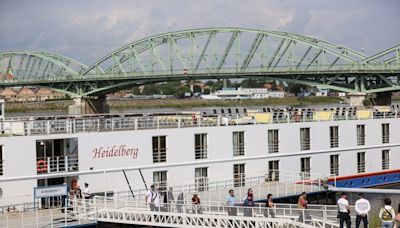Search results
Jul 13, 2021 · One of Europe’s most significant shipping routes today and a major determinant in the settlement patterns and political evolution of Central and South-eastern Europe, the Danube River is the second-longest river of the European continent, after the Russian Volga River. It flows for 2,850km, sourcing from the confluence of Brigach and Breg ...
The Danube is Europe's second longest river after the Volga and the longest river in the European Union. It originates in Germany's Black Forest as the much smaller Brigach and Breg rivers, which join at the town of Donaueschingen.
The Danube River is one of the major rivers of Europe. With its length of 2 850 km (1 770 mi), it is the second longest river of Europe after the Volga . The Danube River flows through 10 countries, 4 capitals and its basin concerned 19 countries.
The Danube, known as the “Blue Danube” in Johann Strauss’s famous waltz, flows through more countries than any other river in the world, making it the world’s most international river basin. Originating in Donaueschingen, Germany, the Danube stretches for about 2,860 km, making it the second-longest river in Europe .
Danube River, German Donau Slovak Dunaj Serbo-Croatian and Bulgarian Dunav Romanian Dunarea Ukrainian Dunay, River, central Europe. The second longest European river (after the Volga ), it rises in Germany’s Black Forest and flows about 1,770 mi (2,850 km) to the Black Sea, passing along or through Germany, Austria, Slovakia, Hungary, Croatia ...
The Danube is the second-longest river in Europe, with a length of 2,850 km (1,770 mi). It begins in the Black Forest in Germany and flows east to the Black Sea, forming the Danube Delta on its western coast. From west to east, the Danube passes through or borders ten countries, including four capital cities:
The Danube is of great economic importance to the 10 countries that border it—Ukraine, Moldova, Romania, Serbia, Croatia, Hungary, Bulgaria, Slovakia, Austria, and Germany—all of which variously use the river for freight transport, the generation of hydroelectricity, industrial and residential water supplies, irrigation, and fishing. The ...

